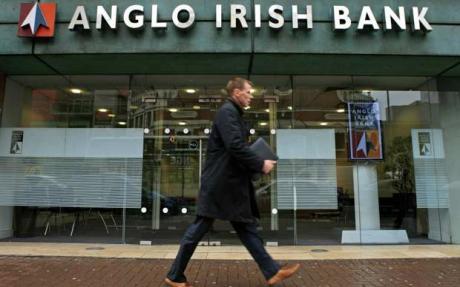The transformation of private debt into public debt

Ireland has guaranteed the assets and liabilities of a large part of its banking system. Parts of this banking system are, to use a technical term, dead. That is, these parts of the banking system will no longer provide credit (for a profit) to the real economy (plumbers who need overdrafts to pay their workers and buy materials). These banks ran up huge losses in a classic property bubble, now their debt is our debt.
Hence the following scary chart. A credit default swap is a measure of the perception of riskiness. So when 5-year CDS contracts for Ireland are more expensive than for Iceland, you should take from this the meaning the markets do: the level of private debt is too great to be absorbed into the public debt and be paid off. As Prof. John McHale is very careful to point out:
The bright line between guaranteed and non-guaranteed debt is relevant here. If the credibility of guarantees is retained, guarantees on new funding could be (liberally) used to raise funds in the future.
There is no simple solution here.

We can try to understand what’s going on with a simple example, though. You earn 100 euros a week, you spend 90 euros a week. You’re saving, doing well. Your brother calls. He says his debts are too great for him to handle, will you help him out? He mentions he is 400 euros in debt. You say yes, and you agree to make his debt yours. Then it turns out not to be 400, but 1000. Suddenly your bank sees you differently. Perhaps you don’t get a loan, perhaps you can’t buy something you want. Your living standards suffer. Not because of anything you have done, but because your income can’t possibly sustain the level of debt you have taken on. Simple arithmetic won’t be denied.
Going back to the national stage, people like Merril Lynch estimate the upfront cost of recapitalising the Irish banking sector will be around 24% of 2010 GDP. Over 70% of this relates to Anglo Irish, if that cost of rescuing that stain of a bank is only about 25bn. If the cost of bailout gets larger, as some analysts argue, then Ireland is in deep trouble, and may be financially insolvent, implying that, at some point, we are not going to be able to make payments on our debt, and we will, eventually, default on this debt. Over at Irish Economy, a discussion is going on about the conditions for such a default, on particular types of debt. Head there and learn something. Commentators Boone and Johnson strike a cautionary note as well.
